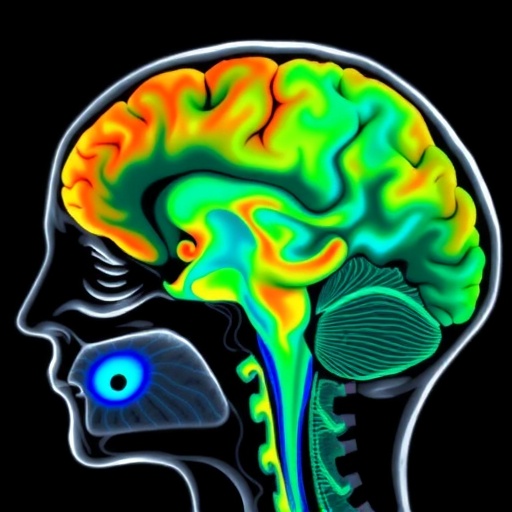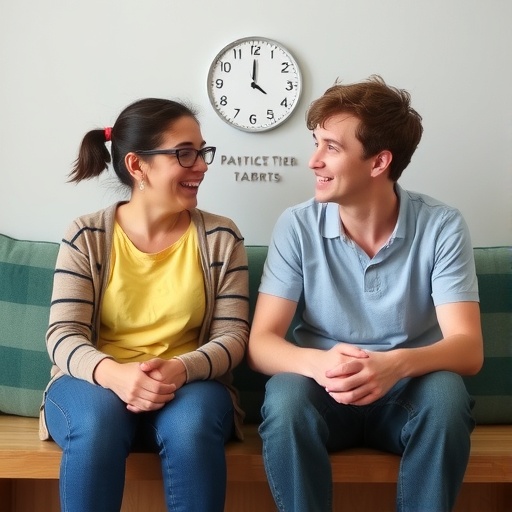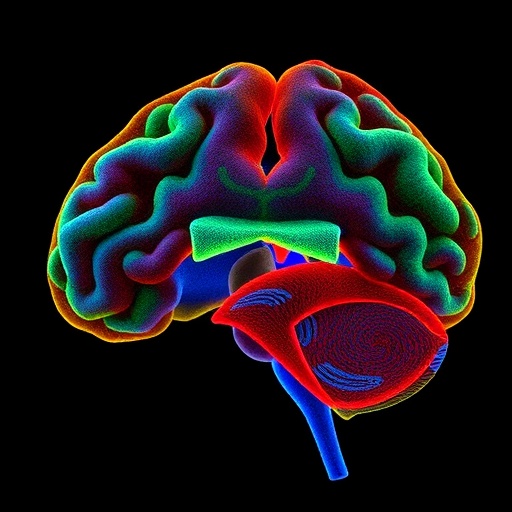
In a groundbreaking advancement that promises to redefine our understanding of cerebral blood flow dynamics, researchers have developed a novel Magnetic Resonance (MR) perfusion source mapping technique that uniquely illustrates venous territories in the brain and demonstrates how blood perfusion is modulated during neural activation. This work, led by Karasan, Chen, Maravilla, and colleagues and published in Nature Communications, introduces a paradigm-shifting methodology for non-invasively mapping venous circulation, offering unprecedented insights into the brain’s vascular architecture and its functional adaptations.
Cerebral perfusion—the process by which blood delivers oxygen and nutrients to brain tissue—is fundamental to sustaining neural activity. While arterial supply has been extensively studied using a variety of imaging approaches, the finer details of venous drainage territories and their temporal dynamics during brain activation have remained elusive. Venous circulation is not merely a passive removal system; rather, it plays an active role in modulating cerebral blood volume and metabolic exchange. The newly introduced MR perfusion source mapping technique fills this critical gap by providing spatially resolved maps of venous territories, revealing the nuanced interplay between neural activation and vascular response.
At the core of this innovation lies the application of perfusion-weighted MR imaging, leveraging the complex dynamics of blood flow and contrast agent kinetics. By meticulously analyzing signal variations related to the passage of tracers through the capillary and venous compartments, the team reconstructed detailed venous territory maps. These maps distinguish distinct venous drainage zones, thereby offering a vascular “topographical” perspective that surpasses previous global or artery-centric imaging paradigms. The capacity to pinpoint venous territories offers a transformative tool for understanding regional cerebrovascular physiology.
The researchers validated their method using both resting-state measurements and cognitive tasks known to engage specific brain regions. During neural activation, subtle yet significant modulations of perfusion were observed not only in arterial inflow but prominently within venous territories. Such findings challenge the conventional assumption that venous hemodynamics merely reflect downstream consequences of arterial supply, underscoring instead a dynamic bidirectional relationship between perfusion source regions and neural function.
To achieve this, multi-delay MR imaging protocols were employed, capturing perfusion data at various time points post-contrast agent administration. This temporal resolution enabled the differential assessment of perfusion kinetics across microvascular compartments and the delineation of venous outflow patterns. The application of sophisticated signal-processing algorithms further enhanced the detection of venous signal signatures, effectively isolating venous contributions from arterial and capillary signals. Such methodological sophistication marks a significant advance over conventional perfusion MRI techniques, which often lack the resolution or specificity to resolve venous territories.
The implications of this research extend far beyond methodological novelty. Mapping venous territories with high spatial and temporal fidelity opens new avenues for studying cerebrovascular disorders such as stroke, vascular dementia, and migraine, conditions where venous congestion or altered outflow patterns may play pivotal roles. Understanding how venous perfusion adapts to or is perturbed by pathological processes could inform novel diagnostic and therapeutic strategies, including personalized assessments of vascular reserve and collateral circulation.
Moreover, this venous perfusion source mapping technique provides a window into the fundamental neurovascular coupling mechanisms—the processes by which neural activity orchestrates vascular responses to meet metabolic demands. The study demonstrated that perfusion modulation during neural activation is not homogeneously distributed but spatially patterned according to venous territory structures. This revelation suggests that the venous system is intricately involved in fine-tuning local cerebral blood volume and pressure, signifying a more dynamic and integrative role in brain physiology than previously appreciated.
The team’s multidisciplinary approach combined expertise in advanced neuroimaging physics, cerebrovascular physiology, and computational modeling. By integrating biophysical modeling of contrast agent kinetics with cutting-edge MR acquisition protocols, the authors created a robust framework for interpreting complex perfusion data. Such synergy was essential for overcoming longstanding challenges in venous imaging, which has historically been hindered by lower signal intensities and overlapping vascular compartments.
One particularly compelling aspect of the study is its potential for longitudinal monitoring of vascular adaptations in health and disease. The non-invasive nature of MR perfusion source mapping allows repeated measures without radiation exposure, facilitating studies of dynamic vascular remodeling during development, aging, or therapeutic interventions. This capacity heralds new possibilities for tracking disease progression or recovery, tailoring interventions based on detailed vascular phenotypes.
Furthermore, the spatial delineation of venous territories revealed by this method may aid neurosurgical planning by identifying critical drainage pathways vulnerable to disruption. Clinicians could leverage these detailed maps to minimize risks of venous infarction or hemorrhage during resective procedures or endovascular treatments. The promise of individualized vascular mapping strengthens the hand of precision medicine in neurology and neurosurgery.
From a technical perspective, the authors emphasize the importance of optimizing MR pulse sequences and contrast injection protocols to maximize sensitivity and specificity for venous perfusion signals. Future work could explore the use of novel contrast agents or ultra-high-field MR systems to enhance spatial resolution further. Additionally, integrating perfusion source mapping with functional MRI and diffusion imaging could provide a comprehensive multimodal framework for assessing both vascular structure and neural function in tandem.
In the broader context of neuroscience research, this discovery reshapes the conceptual boundaries of hemodynamic imaging. By moving beyond arterial-focused perspectives, the field can embrace a more holistic view of cerebral blood flow regulation, incorporating veins as active players in neurovascular health and disease. This may stimulate new lines of inquiry into how venous anomalies contribute to neurological symptoms or how vascular therapies might be optimized by targeting venous mechanisms.
Importantly, the MR perfusion source mapping approach is compatible with existing clinical MRI platforms, suggesting relatively rapid translation into clinical practice. The research community and healthcare providers stand poised to adopt this technique for enhanced vascular assessment, bridging the gap between experimental neurovascular imaging and patient care.
In conclusion, the innovative method introduced by Karasan, Chen, Maravilla, and colleagues represents a significant leap forward in cerebrovascular imaging. By delineating venous territories and uncovering perfusion modulation during neural activation, this work not only advances scientific understanding but also offers a powerful tool with broad clinical and research applications. As further studies expand on these findings, we may anticipate a new era in neurovascular medicine grounded in the detailed mapping of venous circulation.
Subject of Research: Cerebral venous territories and perfusion dynamics during neural activation using MR perfusion source mapping.
Article Title: MR perfusion source mapping depicts venous territories and reveals perfusion modulation during neural activation.
Article References:
Karasan, E., Chen, J., Maravilla, J. et al. MR perfusion source mapping depicts venous territories and reveals perfusion modulation during neural activation. Nat Commun 16, 3890 (2025). https://doi.org/10.1038/s41467-025-59108-3
Image Credits: AI Generated
Tags: advanced imaging techniques in neurosciencebrain activation and venous drainagecerebral blood dynamicsinsights into brain vascular responsemetabolic exchange in cerebral circulationMR perfusion mappingneural activation and blood flownon-invasive brain imagingperfusion-weighted MR imagingunderstanding cerebral perfusionvascular architecture of the brainvenous territories in the brain





